NATURE NOTES FOR AUGUST

Where have all the Barn Owls gone?
Last year by July there were 8 occupied sites on or very near to the Roseland. This year I know of only half that number. So, what has been happening? It is true that survival of egg clutches and feeding of young depend on having good weather conditions, so perhaps it was the very cold months followed by the very wet months that took its toll. Or it may be that Covid restrictions have meant that fewer observations have been made by people out and about.
Whatever the reason I would be grateful if you could let me know, in confidence, if you believe you have knowledge of a nest or roosting site, for this exceptional bird.
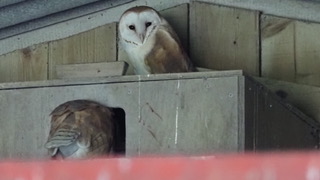 I hope to be able to visit known sites and new sites to corroborate your evidence, so I can then provide an update for the September edition of the Roseland magazine. I want to reassure you that I will not divulge or publish specific details without your express permission.
I hope to be able to visit known sites and new sites to corroborate your evidence, so I can then provide an update for the September edition of the Roseland magazine. I want to reassure you that I will not divulge or publish specific details without your express permission.
So please contact me, either by phone on 01872 501429, or text 07971024161, or email hallruan@aol.com if you have some positive news; and let’s hope those numbers rise!
Big Butterfly Count
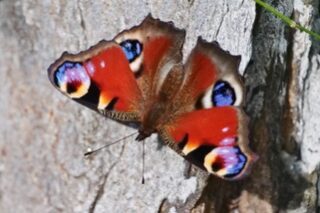 Are you aware of the Big Butterfly Count organised by the Butterfly Conservation group? It is a nationwide citizen science project aimed at helping to assess the health of the environment. And, it is good fun.
Are you aware of the Big Butterfly Count organised by the Butterfly Conservation group? It is a nationwide citizen science project aimed at helping to assess the health of the environment. And, it is good fun.
Last year over 111,500 people took part submitting over 145,000 counts of butterflies and day flying moths across the UK. It started running this year on Friday 16th July, but it is still open for you to submit your results until Sunday 8th August.
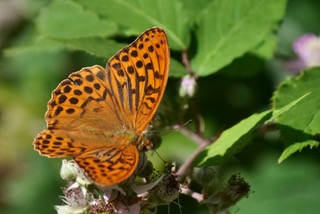 Butterflies are key biodiversity indicators as they react very quickly to changes in our environment. It has been described as “taking the pulse of nature”, so the count will be used to assess how much help nature needs. In addition, the data assists us in planning how to protect butterflies, as well as expanding our knowledge of how climate change affects wildlife.
Butterflies are key biodiversity indicators as they react very quickly to changes in our environment. It has been described as “taking the pulse of nature”, so the count will be used to assess how much help nature needs. In addition, the data assists us in planning how to protect butterflies, as well as expanding our knowledge of how climate change affects wildlife.
To take part, spend 15 minutes on a preferably sunny, warm, still day, anywhere you like, recording the maximum number of species you observe at any one time. You can do as many counts as you want, on the same day or on different dates, places, and times right up to the 8th of August.
To help you identify species and to participate, download the Big Butterfly Count App. This has an extremely helpful recognition chart for each targeted species; together with a way of recording your count online, and a map plotting where you saw them. Big Butterfly Count
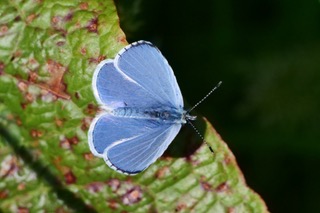 The targeted species are Large White, Small White, Green-veined White, Brimstone, Marbled White, Small Copper, Gatekeeper, Meadow Brown, Ringlet, Scotch Argus, Speckled Wood, Comma, Painted Lady, Small Tortoiseshell, Red Admiral, Peacock, Common Blue, Holly Blue, Silver Y, Six-spot Burnet, and Jersey Tiger.
The targeted species are Large White, Small White, Green-veined White, Brimstone, Marbled White, Small Copper, Gatekeeper, Meadow Brown, Ringlet, Scotch Argus, Speckled Wood, Comma, Painted Lady, Small Tortoiseshell, Red Admiral, Peacock, Common Blue, Holly Blue, Silver Y, Six-spot Burnet, and Jersey Tiger.
Any others you see can be added to your records. I do hope you can take part in this very worthwhile survey.
Good luck.
Thank you for your continued support of Wild Roseland
David Hall.
Photos copyrighted and accredited:-
Barn owl by Stuart Martinez and David Hall
Butterflies in order (Peacock, Gatekeeper, Silver Washed Fritillary and Holly Blue) by Jane Lewarne.
Update of Mike’s Meadow
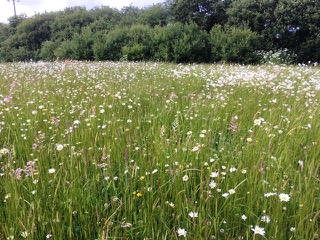 Butterflies are among the pollinators attracted to our wildflower patches including Mike’s Meadow at Veryan. On a hot day in mid July, Wild Roseland members at the meadow recorded at seven species of butterfly and we also attempted to record all the plant species, which have become established since the project started in 2019.
Butterflies are among the pollinators attracted to our wildflower patches including Mike’s Meadow at Veryan. On a hot day in mid July, Wild Roseland members at the meadow recorded at seven species of butterfly and we also attempted to record all the plant species, which have become established since the project started in 2019.
Inevitably quite a few species present in the original seed mix have not yet been seen while others dominate, at least for now. We also recorded a number of opportunistic species, which were probably dormant in the soil waiting to take advantage of the more open conditions provided, along with others like silverweed and tufted vetch, which were already present along the edges. Cornfield annuals provided the splash of vibrant colour in 2019 in the original area but as the grass sward has developed over the past two summers there has been less colour, but perhaps greater diversity with species such as greater knapweed and ladies bedstraw increasing.
 Where the ground has been disturbed again, especially around the field entrance, corn marigold, corn chamomile and others have taken their chance once more. Over 30 species of flowering plant were identified along with at least 9 species of grass. Particularly pleasing was the presence of pignut, normally found in unimproved grassland and not in the original mix.
Where the ground has been disturbed again, especially around the field entrance, corn marigold, corn chamomile and others have taken their chance once more. Over 30 species of flowering plant were identified along with at least 9 species of grass. Particularly pleasing was the presence of pignut, normally found in unimproved grassland and not in the original mix.
The second area, which is only in its second summer, shows little evidence of the cornflower annuals dominant last year, now outcompeted by coarse grass and white clover.
 A decision was taken to start cutting and removing the vegetation from this area now, leaving the more floral rich first area until later in the summer. For the past two years we have been grateful to the National Trust Roseland rangers who have cut the whole meadow in September but this doesn’t give us the flexibility to take a different approach to management in different areas as we would now like to do. Instead this year seven Wild Roseland members, who attended an excellent scythe training course in July, are starting to put their newfound skills into practice!
A decision was taken to start cutting and removing the vegetation from this area now, leaving the more floral rich first area until later in the summer. For the past two years we have been grateful to the National Trust Roseland rangers who have cut the whole meadow in September but this doesn’t give us the flexibility to take a different approach to management in different areas as we would now like to do. Instead this year seven Wild Roseland members, who attended an excellent scythe training course in July, are starting to put their newfound skills into practice!
Our tutor was Kevin Austin, from Skygrove near Herodsfoot, recently retired as Manager of the Estate team at Eden and an international scyther! The Austrian or continental scythe is an adjustable more ergonomic tool than the old English equivalent and is relatively easy to hone to keep sharp.
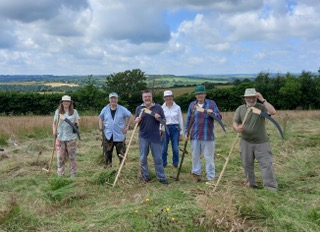 If you visit Mike’s Meadow over the next few weeks along with an updated display you will see the gradual mowing carried out by the WR scything team. The cuttings from the second, grass and clover rich, area are being removed but when we cut the rest it will be left to dry and shed seed for while.
If you visit Mike’s Meadow over the next few weeks along with an updated display you will see the gradual mowing carried out by the WR scything team. The cuttings from the second, grass and clover rich, area are being removed but when we cut the rest it will be left to dry and shed seed for while.
 Looking further to the future we are planning to sow more yellow rattle seed (mainly gathered form the wonderful flower rich meadows at Lethytep, courtesy of Philip Hambly who has also provided some excellent guidance), and also to consider how we might cut the aftermath later in the year or in early spring next year to ensure that the meadow continues to develop for our benefit and those butterflies, bees and other pollinators.
Looking further to the future we are planning to sow more yellow rattle seed (mainly gathered form the wonderful flower rich meadows at Lethytep, courtesy of Philip Hambly who has also provided some excellent guidance), and also to consider how we might cut the aftermath later in the year or in early spring next year to ensure that the meadow continues to develop for our benefit and those butterflies, bees and other pollinators.

